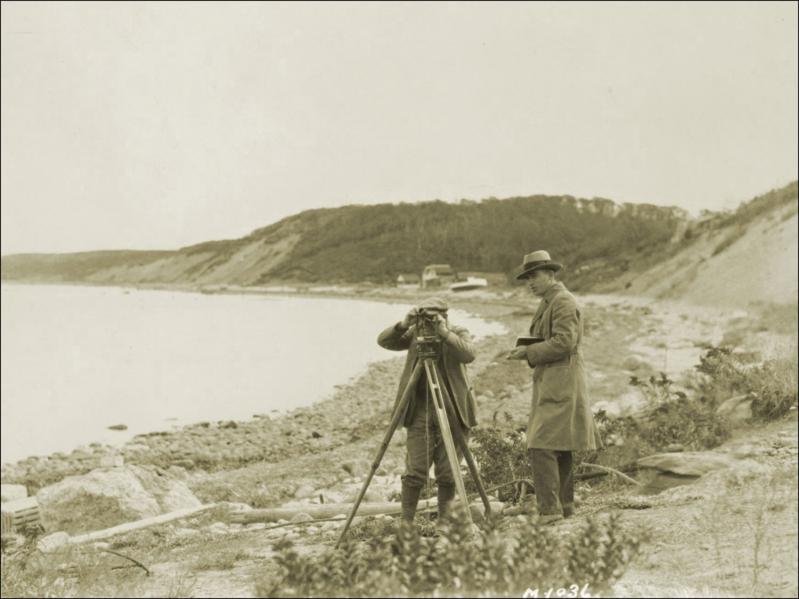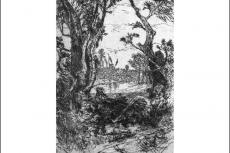Amid the headlines on the front page of The East Hampton Star’s issue published 100 years ago today, one directly below the masthead stood out.
Between “Village Tax Rate This Year Is $1.20,” “Sea Spray Hotel Sold for $100,000,” and “Daylight Saving Ends Sunday Morning” was this: “CARL FISHER BUYS 9,000 ACRES AT MONTAUK FOR $2,500,000 PLANS HUGE DEVELOPMENT.” With that transaction, East Hampton Town’s easternmost hamlet would never be the same.
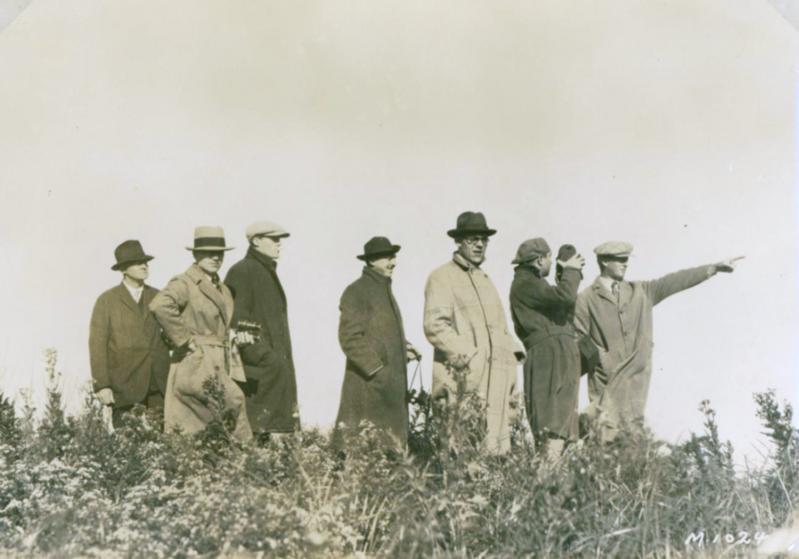
The article confirmed a page-one headline from the previous week that was less definitive with the transaction’s acreage and cost. “This week the Star can confirm its report of last week stating that over 5,000 acres of Montauk property had been sold to Carl G. Fisher, for development purposes,” the article began. “The Star was the first newspaper to publish the announcement of this important real estate transaction, even the New York Dailies not carrying the announcement until Saturday or Sunday.”
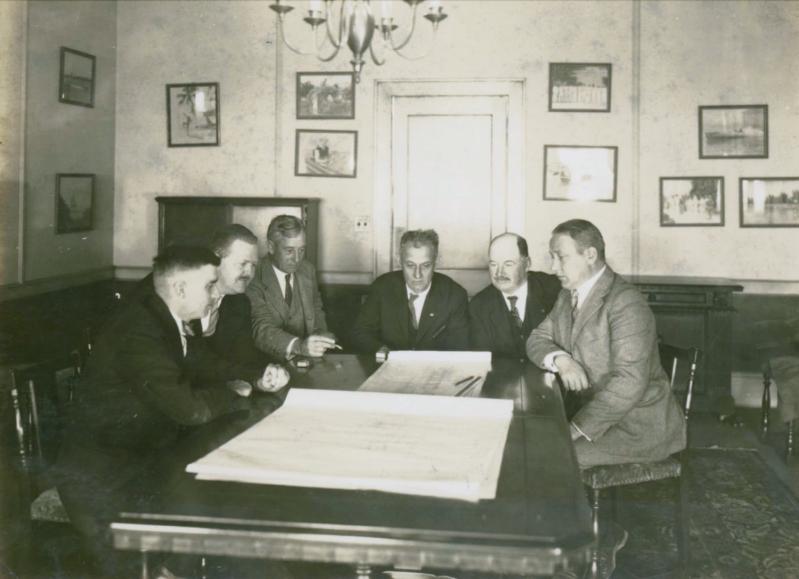
Fisher, born in Indiana in 1874, was an entrepreneur in automobiles, real estate, and highway construction. He was “regarded as a promotional genius for most of his life” and “responsible for turning Miami Beach from a mangrove swamp into America’s favorite resort,” according to the Indiana Historical Society. Will Rogers, according to the historical society, described Fisher as “doing more unique things even before he had heard of Florida than any man I ever met.”
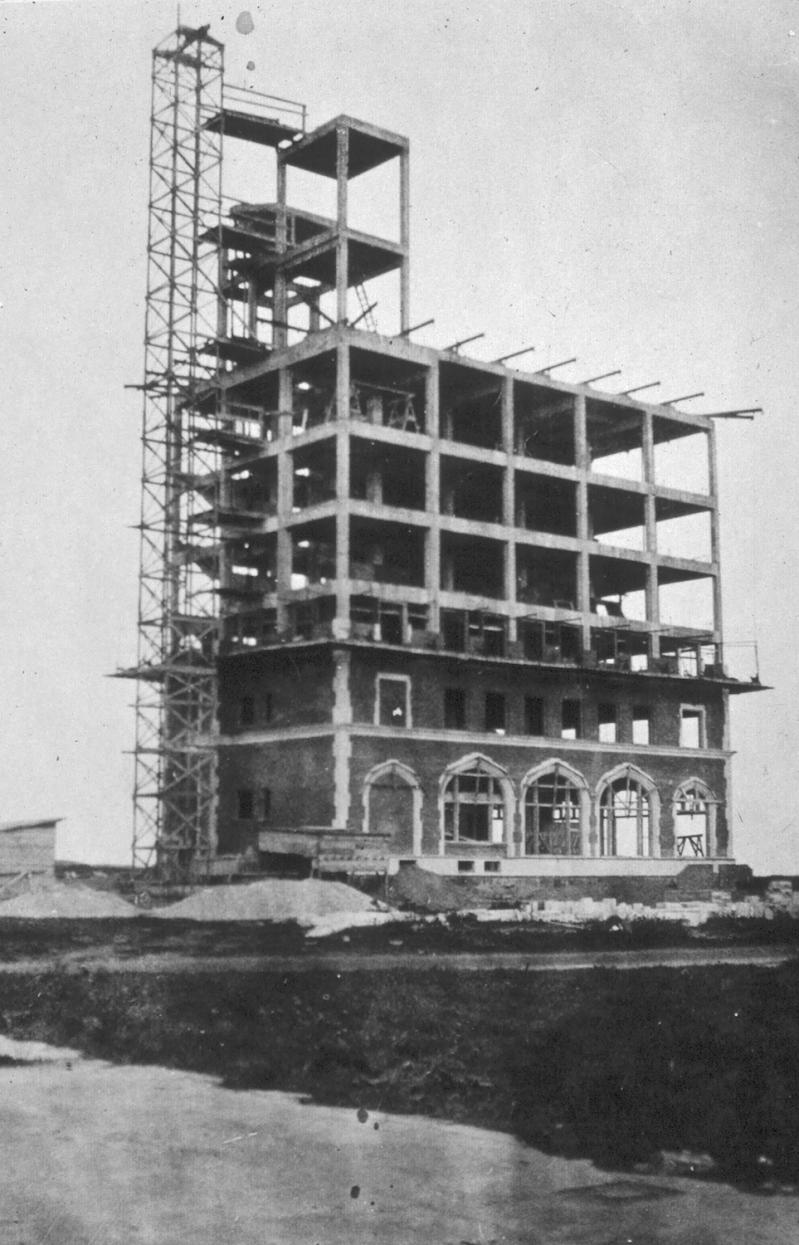
The Star went on to report Fisher’s ambitious plans for his new property, acquired from the Long Island Rail Road, the Montauk Company, and the Arthur Benson estate, with development to commence immediately. “This gigantic real estate proposition is equal and will probably turn the tables on the Florida developments made by Mr. Fisher,” it stated. His new property, “rolling land, comprises a waterfront of fifteen miles and encloses such large water lakes as Great Pond, Fort Pond, Oyster Pond, Big and Little Reed Pond.” Thirty miles of roads, three hotels “at commanding points on the property,” a bathing pavilion, three golf courses, polo fields, barns for 200 horses, “a half-mile gentlemen’s driving track,” 20 miles of bridle paths, and “three covered tennis courts, with a seating capacity of 15,000” were planned.
“There will be boat lines between Montauk Beach and New York and to New London, Conn., and Boston,” The Star reported, along with this detail: “Montauk Lake will be opened to the sea with a 300-foot channel, permitting steamers and yachts drawing up to twenty feet of water to enter the landlocked harbor.”
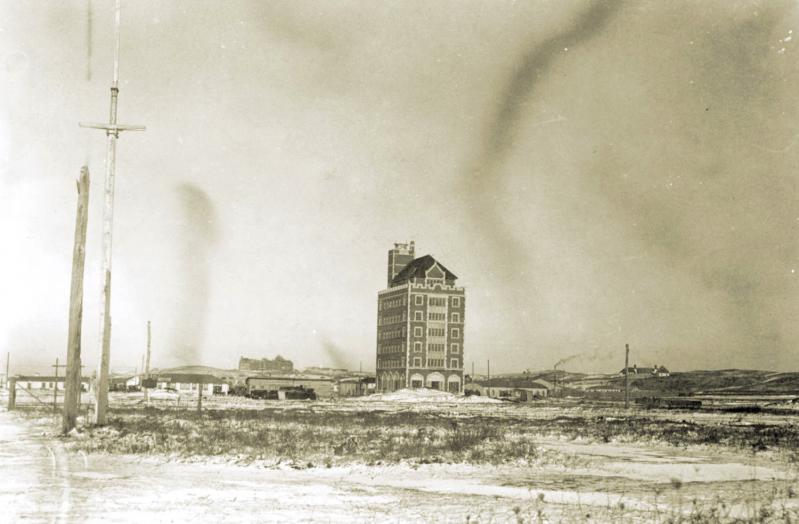
The Montauk School, the Playhouse, the Manor, the Surf Club, the Yacht Club, the Deep Sea Club, the Community Church, “Carl Fisher’s Skyscraper Office Building” in what would become the hamlet’s downtown, and his residence on Foxboro Road, now known as Carl Fisher House — many of the grand structures for which he is known remain standing today. One hundred years later, Fisher’s influence on Montauk, now immense in the popular imagination, remains profound.
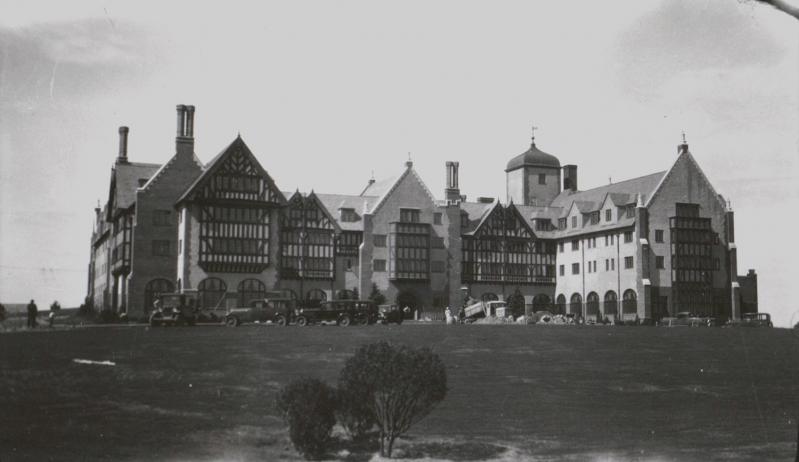
“He had a huge master plan, and he achieved quite a few of his goals,” said Mia Certic, executive director of the Montauk Historical Society. “He had a vision of Montauk: It reminded him a lot of Scotland, physically. It looked a lot like the north of Scotland at the time — not too many trees, rolling hills and grassland, and sheep and cattle. Hence, the Tudor-style buildings — it was supposed to look European.”
The transformation was remarkable. “For hundreds of years Montauk existed as a grazing area,” said Dick White, the Montauk Historical Society’s treasurer and former president. “The only white settlers that lived there were cattle keepers in First House, Second House, Third House. When Fisher came, that was a huge change in the character of Montauk, from the open grazing.”
“My grandfather opened a drug store in 1927,” Mr. White said. “He wanted to be on the ground floor with Fisher.” He described the hamlet’s Main Street in Fisher’s time, which included a movie theater, a hardware store, a market, a sweets shop, and Montauk Tavern, later known as Shagwong Tavern.
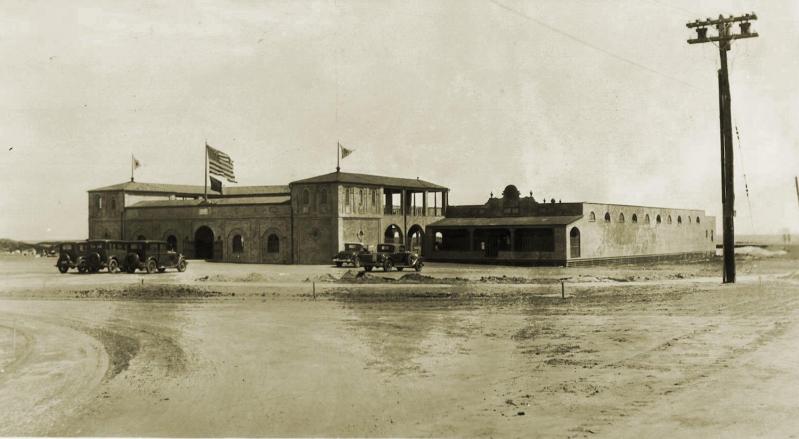
Fisher’s “playground involved horses, polo,” said Bill Akin, whose family bought Fisher’s house in 1956. “His vision included a racetrack around the golf course.” A YouTube video called “ARCA Grand Prix Montauk Point, NY 6-6-1940,” is a rare illustration both of Fisher’s influence on Montauk and how little development the hamlet had seen, even in 1940, a year after his death. “You can look across East Lake Drive and not see a single house,” Mr. Akin said of the short, silent film.
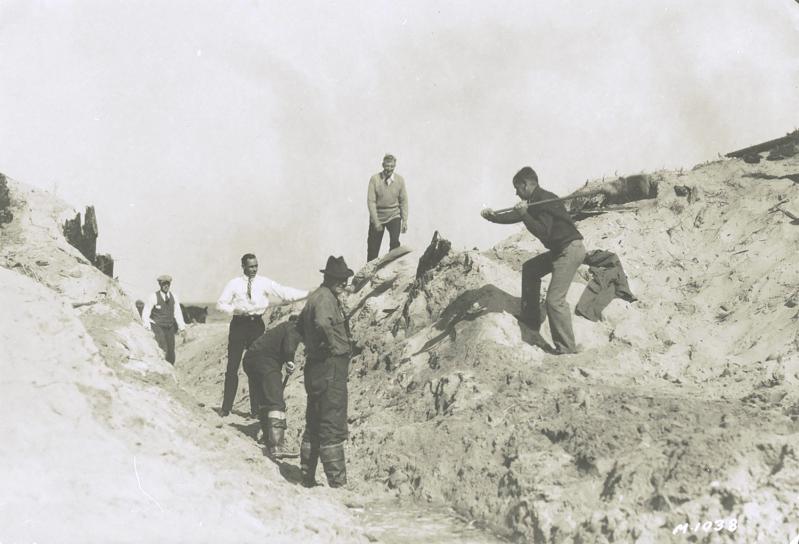
But “the thing that changed Montauk more than anything — completely — was opening the inlet,” Mr. Akin said. “If he hadn’t, we’d still be suffering for a harbor, and you would have never had the fishing industry you have, which was responsible for a long time for building Montauk up.” Mr. Akin is the author of “The Golden Age of Montauk Sportfishing: Interviews with Eight Legendary Captains” and “The Equanimity of Fishes: Stories and Reflections From Seven Decades in Montauk.” “My parents came out here, I came here, primarily to go sportfishing,” he said.
Lake Montauk, he and Ms. Certic noted, had been the largest freshwater lake on Long Island. “It’s hard to quantify how significant that was,” Ms. Certic said of opening it to Block Island Sound, “in good and bad ways. I’m sure that environmental impact would never be allowed” today.
“He could never get away with that today,” Mr. Akin agreed. But “there are, like, 1,200, 1,300 boat slips in that harbor today, a massive number. For a long time, before the surfing craze started in the ‘60s and which I participated in heartily, it was still a fishing town. That was it. A few people went to the beach once in a while.”
“For the most part, [Fisher] really encouraged pleasure boating,” Ms. Certic said, the commercial fleet docking at Fort Pond Bay until the 1938 Hurricane wiped out most of the fishing village there.
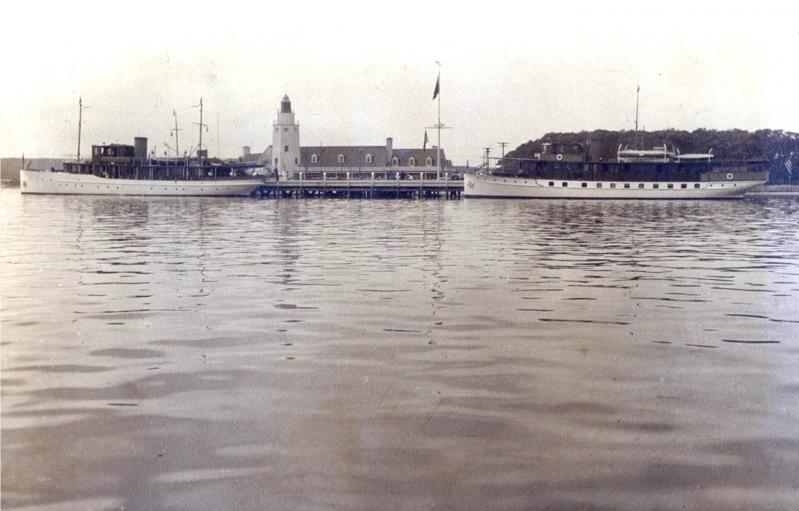
“When Fisher opened up the lake, that was for the well-to-do, the Yacht Club people,” Mr. White said. “I understand they had powerboat races in the lake too, once or twice. That must have been impressive.”
Mr. Akin’s father purchased Fisher’s house from his second wife, the former Margaret Collier, who “supposedly was very reluctant to get rid of it,” Mr. Akin said. Lindsey Hopkins, another businessman in the fledgling automobile industry and a stockholder in Fisher’s hotel chain, “convinced Margaret to sell the house to my father,” he said. “I was 11 years old when we moved in.” (The town acquired the house in 2021, and the Montauk Historical Society holds a license agreement to manage the property.)
Fisher, a onetime millionaire, died a near-penniless alcoholic in 1939. “His vision of this being a playground for the rich and idle, it worked for him in Miami and didn’t here, for a bunch of reasons,” Ms. Certic said. “The first big blow was having come here with his hundreds and hundreds of workers — I’ve seen estimates between 700 and 2,000 people. He didn’t do things slowly or by half-measures, he was all in.”
Shortly after, she said, “he leveraged all his properties in Miami to be able to afford it, then there was a huge hurricane in Miami” — exactly one year after Fisher’s purchase in Montauk — “and he needed that money back to do the repairs. Another thing working against his dream was that [Montauk] had a very, very short season at that time, basically two months. Also, a lot of things he was offering here that were novelties in Miami were not here, like polo grounds, tennis courts, country clubs. We had them closer to the city, and reasonably close to Montauk. A lot of that worked against him, and then the stock market crash in 1929, it just deteriorated from there.”
“He wanted to make Montauk the Miami Beach of the North,” said Hugh King, the town historian. “If you look at an aerial of Miami Beach, imagine what Montauk would have been like!”
One hundred years later, affluent pleasure seekers still crowd Montauk hotspots in the summer, turning the hamlet into that “playground for the rich and idle.” In that respect, did Fisher succeed? “It’s hard to put Carl Fisher in the year 2025, because it wasn’t like that in 1925,” Mr. White said. “Although, he was a promoter, an entrepreneur, so maybe he would have been with the times.”
“The social norms are so radically different,” Mr. Akin said. “I think people back then, in the social circles that Fisher envisioned, were a lot better behaved. When I think of the upscale crowds I have read about in Miami, I have a sense that they were about 10 years older and more mature than the crowd we see here in the summer jamming themselves into the Surf Lodge, the Point, Memory Motel.”
A sign of the hamlet’s notoriety is seen in today’s myriad Montauk-branded products, from scented candles to beer and tequila. The Montauk Tackle Co., Mr. Akin noted, sells “a full line of clothing and not a single piece of fishing tackle.”
“Montauk, to me, is the smell of wet fishnets at the dock, an east wind off the ocean, fog, a walk through Shadmoor,” he said. “That’s Montauk. Paying $10,000 to party at the Surf Lodge is not. I don’t think Carl would have been nuts about that.”

